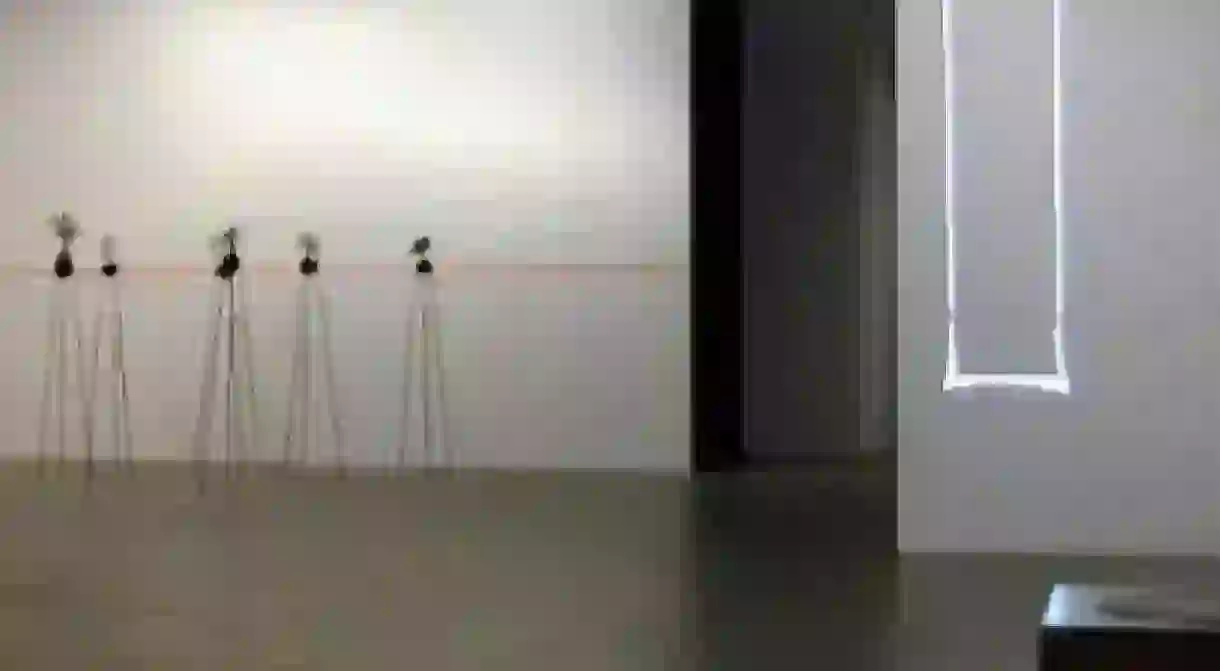Repetitions, Humour and Silence in the Art of Su-Mei Tse

Luxembourg artist Su-Mei Tse creates beguiling video installations in which the visual is juxtaposed with the musical, often to surprising effect. These repetitive art works can provoke a meditative, fugue state in the viewer, whilst also providing an ironic and satirical commentary on reality.

Su-Mei Tse is an artist who highlights the importance of music in her work and never fails to convey a romantic, and often absurd sense of life. As she says: ‘Years ago I started to use my musical interests and experiences as a language in my work. That’s how I got to feel the most satisfied in the way of expressing my self’. She was born in 1973 in Luxembourg City, where she still lives and works, alternating with periods based in Paris. In her work she engages with various media, experimenting with new combinations in which the visual and audio are combined in innovative ways. In 2003 she won the Golden Lion Award, representing Luxembourg at the Venice Biennale and since then, she has been highly regarded throughout the international art world. Tse is interested in visualizing existential noises, notes that constitute people’s daily soundtracks but which are not often noticed. Quite often she chooses to work with videos where humans interact within vast landscapes by producing sounds. In ‘Les Balayeurs Du Desert’ (The Desert Sweepers) men dressed in the Parisian street cleaners’ uniform alternatively carry on sweeping a desert landscape in a continuous loop sound tracked by the sound of sweeping. Here Su-Mei Tse’s humanism is combined with a sense of the absurd; the action of sweeping is repeated over and over, which confers a dose of sharp and disturbing sarcasm to the video.

For this reason, her practice recalls Pina Bausch’s choreography where the same movement is infinitely performed, condemning the viewer to the limbo between wild laughter and a dramatic sense of disquiet. Tse’s remarkable, canny and thought-provoking art piece also communicates the artist’s subtle suggestion of uniforms as metaphors. Su-Mei Tse seems to express her distrust of ambiguous mass activities which suppress individual drives; in a way that echoes Sartre’s position, the artist contests the erroneous belief that a man could be described by what he does for living, by his function in the world. While Su-Mei Tse attended the Ecole Nationale Supérieure des Beaux-Arts to study plastic arts in Paris, she was also learning how to play the cello; this is a dialectical attitude reflected in her work too, where various images and sounds interact with each other and which is also reminiscent of Pina Bausch’s practice. In fact, as the German artist once said: ‘In the work, everything belongs to everything else – the music, the set, the movement and whatever is said. I don’t know where one thing stops and another begins, and I don’t need to analyze it’. Tse’s ‘Chambre Sourde’ is an installation that invites the viewer to contemplate the silence. The English translation of the title, ‘anechoic room’, suggests that the artist wants to make the public aware of the total absence of sounds. As viewers enter the room, they find themselves in a state of meditation; there is a sense of suspension that dominates the ambience, which is given by taking away the constant whispers our ears are accustomed to. Tse channels the Ancient Greek Sceptic’s concept of epochè, which refers to the precise moment where all judgements are suspended and suggests an intellectual pause in which self-consciousness is attained. As in Su-Mei Tse’s piece, not to rush towards any conclusion doesn’t imply a passive attitude; quite the contrary, the viewer, like a sceptical philosopher, is actively aware of his or her body and mind. Music plays a substantial role in the Luxembourg artist’s practice; it gives a romantic allure to what is an already poetic installation. It’s often orchestrated with a subtle irony that imparts a touch of humour to her work. Su-Mei Tse’s work is ‘cosmicomical’, a word the Guardian writer Brian Dillon adopted to describe the practice of Scottish artist Katie Paterson. The two share several similarities: they use a hybrid language in between metaphysics and materialism in order to stimulate people’s thoughts. Music is where they meet, recalling once again the harmonious interaction between sounds and visions in the creation of a compelling piece of art.
By Elena Dolcini













